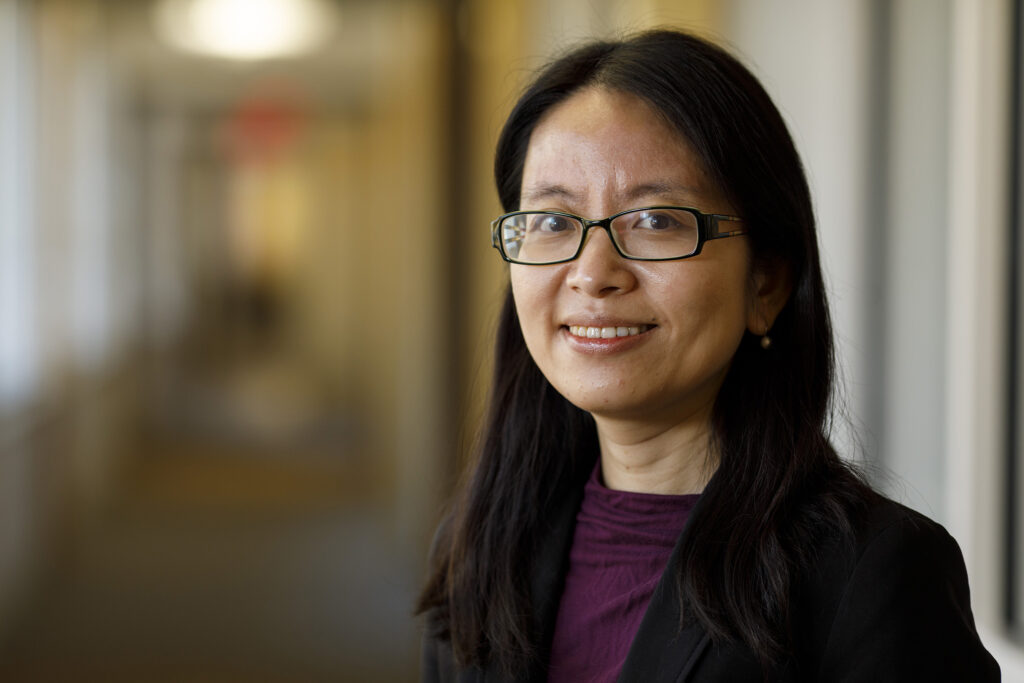An overall increase in primary care clinicians has not closed the gap between rural and urban health care disparities. That’s according to research from a University of Georgia scientist.
“We know that rural patients die early from heart disease and stroke. In general, they have a higher mortality,” said Donglan “Stacy” Zhang, assistant professor of health policy and management in the College of Public Health. “We wanted to explore the upstream factors that drive that difference.”
Ph.D. student Gang Li, left, talks with professor Donglan “Stacy” Zhang in a conference room inside Wright Hall on the Health Sciences Campus. (Photo by Andrew Davis Tucker/UGA)
The study looked at access to primary care doctors, using data from more than 3,000 counties to examine changes in the rural-urban distribution of the U.S. primary care workforce from 2009 to 2017. The density of primary care clinicians increased significantly in both rural and urban counties during the eight-year time period, but the increase was more pronounced in urban counties compared with rural counties.
“We assessed the rural-urban gap in access to primary care clinicians, including primary care doctors, nurse practitioners and physician assistants,” said Zhang, co-lead author with Heejung Son. “We found that rural places saw a higher rate of increase in the density of nurse practitioners and physician assistants than in primary care physicians.”
There is ongoing discussion about the shortage in primary care physicians and how nurse practitioners and physician assistants can help fill the gap in access to health care, particularly in the health professional shortage areas, Zhang said. In some states, laws allow nurse practitioners to prescribe medications without physician involvement, but other states limit the scope of their practice.
The study, published in JAMA Network Open, is part of a National Institutes of Health-funded project exploring rural-urban disparities and risk factors in cardiovascular disease. Zhang’s study is the first to track data over many years and from a geographic perspective.
“Access to primary care is believed to be a protective factor for chronic disease and overall health, and we know people living in rural regions have poorer access to primary care providers,” she said. “We’re trying to understand each driver of this phenomenon that collectively leads to geographic disparities in mortality and life expectancy.”
Zhang is exploring additional factors like telemedicine expansion and how medical students choose their locations for residency training and medical practice, topics that will be reported on in future papers.
“There’s a lot of work that needs to be done to figure out how all the variables work together and how the gap between rural and urban health care access might be reduced,” she said.
Co-authors include Heejung Son, Ye Shen, Zhuo Chen, Janani Rajbhandari-Thapa and Lan Mu at UGA; Gang Li at UGA and the Huazhong University of Science and Technology; Yan Li, Heesun Eom and Daniel Bu at the Icahn School of Medicine at Mount Sinai; and José A. Pagán at New York University.
This study was funded by a National Institute on Minority Health and Health Disparities grant, 1R01MD013886-01, to Zhang.
